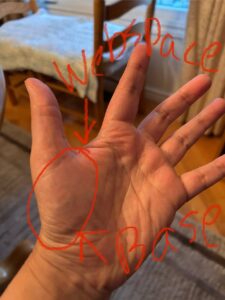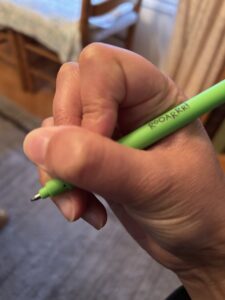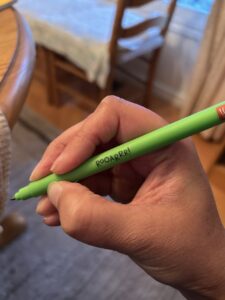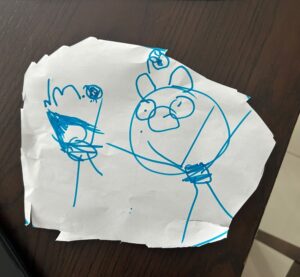Why Thumb Position and Pencil Grasp Matter for Writing
Most people don’t check their child’s thumbs … but they are the biggest clue to why writing feels awkward, tiring, or even painful.
Thumbs are so underrated when it comes to your child’s pencil grasp.
A couple of weeks ago I shared the explanation below with a parent I worked with in my Writing Breakthrough service, and they said it was really helpful. So I thought I’d share it here too, in case it helps you see something new.
The Thumb’s Job in Writing
When your child holds a pencil (or anything small), the thumb has to be strong and steady at the joint to withstand the downward push of the fingers.
Every time the fingers press down, the thumb has to push up even more to keep the pencil balanced.
📸 Photo 1: Thumb webspace — the fleshy muscle at the base of the thumb that provides stability.

It’s not just the tip or pad of the thumb doing this work — the base of the thumb joint (that fleshy webspace between the thumb and finger) has to be really strong and stable first.
When the base joint isn’t steady, the rest of the thumb will be weak. Sometimes this is due to hypermobility.
What Happens Without Stability
When that thumb base isn’t strong enough, kids often compensate by wrapping the thumb right around the pencil.
This gives them a sense of stability, but it also causes the hand to squeeze too tightly, leading to soreness and fatigue.
📸 Photo 2: Thumb wrap — a sign the thumb is compensating for weakness or instability.

No wonder writing feels uncomfortable — and no wonder many kids resist it.
What a Strong Thumb Looks Like
When the thumb is strong and steady at the base, the whole hand looks more relaxed. The pencil rests between the fingers, the thumb joint pushes up gently, and the grip feels stable without squeezing.
📸 Photo 3: Strong thumb grip — showing stability and support for writing.

That’s what makes writing more comfortable and less tiring for kids.
A Real Example
This is one of the observations I made for a family who purchased the Writing Breakthrough.
They weren’t sure why their child resisted writing or why it took them so long to get words on paper. After sending me the videos I asked for, I could see exactly what was going on — from posture to grasp to a combination of whole-body and fine motor tasks.
I shared detailed observations about why their child was struggling, and gave them a tailored program of 4 activities, not just hand drills, but sensory support, core strength, and hand strengthening too.
Last week, I received a message from the parent saying their child is actually enjoying the program for the first time ever, after refusing all the fine motor drills and writing practice they’d tried before.
How the Writing Breakthrough Works
🎥 Send me 4 short videos of your child doing simple tasks I’ll guide you through
🧠 Get my expert OT observations and insights
🎯 Receive 4 targeted activities tailored to your child’s sensory and motor needs
Within 48 hours, you’ll have a clear, personalised action plan to make writing feel easier.
Cost: £150
Imagine having my expert OT eyes on your child and knowing exactly what to do within 48 hours? You can.



